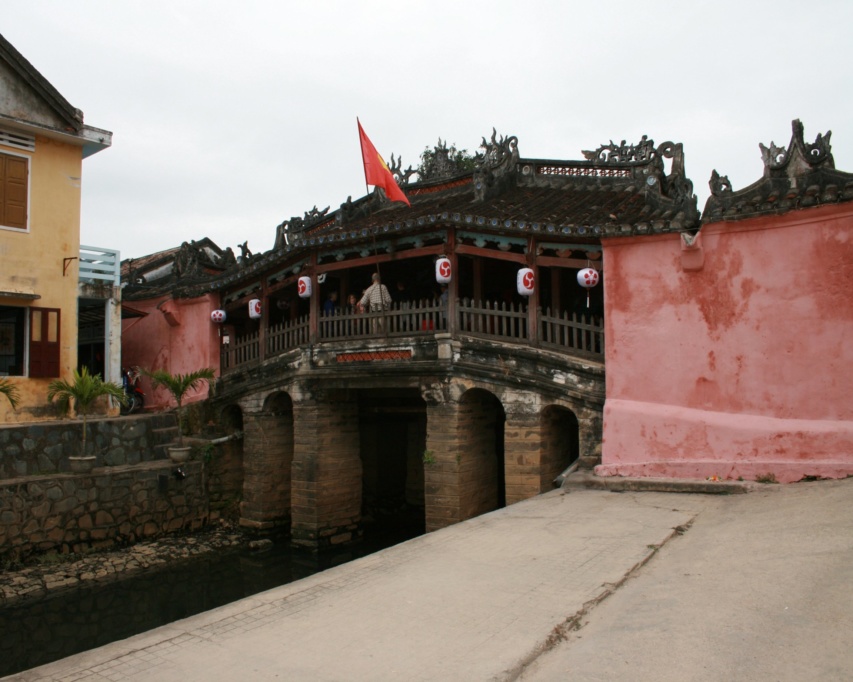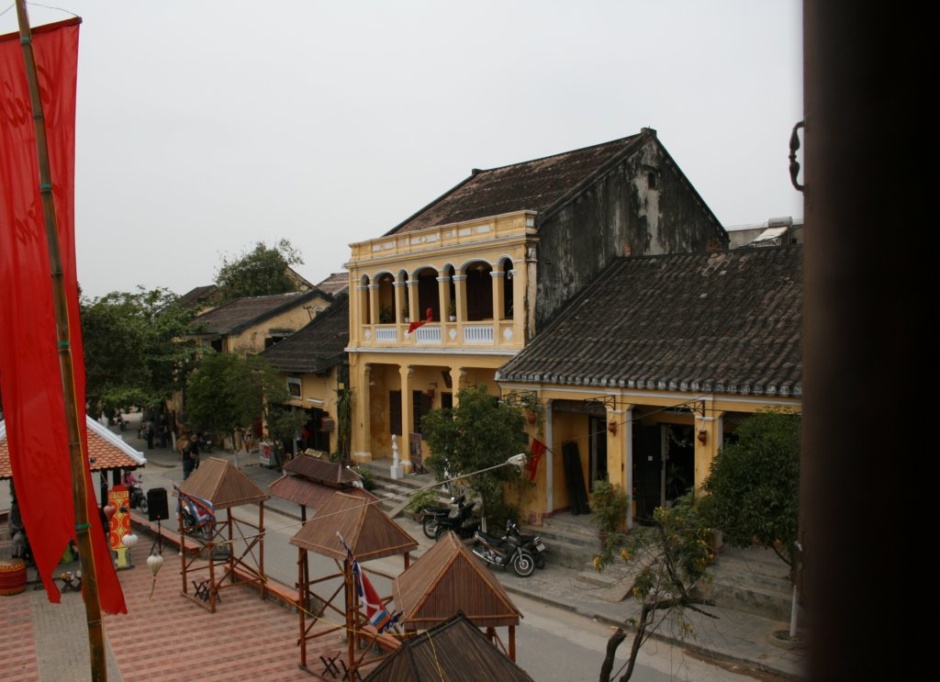Hoi An Vietnam Travel Guide A Vagabond Life
Hoi An, a picturesque town located on the central coast of Vietnam, beckons travelers with its timeless charm, rich history, and captivating beauty. Established as a bustling port town in the 15th century, Hoi An flourished as a vital trading post along the Silk Road, welcoming merchants from across Asia and Europe. This prosperous era left an indelible mark on the town’s architecture, characterized by ornate temples, colorful shop houses, and atmospheric lantern-lined streets.
Today, Hoi An’s well-preserved Old Town, recognized as a UNESCO World Heritage site, offers a glimpse into its storied past, with centuries-old buildings and cultural landmarks awaiting exploration. Visitors can immerse themselves in the town’s vibrant atmosphere, wandering through bustling markets, sampling delectable street food, and discovering traditional handicrafts.
Beyond its historical allure, Hoi An boasts stunning natural landscapes, including pristine beaches and verdant rice paddies, providing ample opportunities for relaxation and adventure. Whether exploring its cultural heritage, indulging in culinary delights, or simply soaking in its tranquil ambiance, traveling to Hoi An promises an unforgettable journey through Vietnam’s rich tapestry of history and culture.
Hoi An Vietnam Map
Getting To Hoi An Vietnam
Getting to Hoi An from Major Cities in Vietnam
From Da Nang
Da Nang International Airport (DAD) is the nearest airport to Hoi An, located approximately 30 kilometers away. Here are the options for traveling from Da Nang to Hoi An:
Taxi: A taxi ride takes around 30-45 minutes and costs about 300,000 VND ($13 USD). Taxis are readily available outside the airport.
Shuttle Bus: Several shuttle bus services operate between Da Nang Airport and Hoi An. It’s a budget-friendly option with prices starting from 100,000 VND ($4 USD) per person.
From Hue
If you’re traveling from Hue, located north of Hoi An, you have several transportation options:
Train: Take a scenic train journey from Hue to Da Nang, then transfer to Hoi An by taxi or shuttle bus. The train ride offers picturesque views of Vietnam’s coastline and lush countryside.
Bus: Direct buses operate between Hue and Hoi An, with a travel time of around 4-5 hours. Buses depart regularly from Hue’s city center.
Getting to Hoi An from International Destinations
From Hanoi
If you’re flying from Hanoi, Vietnam’s capital, you’ll arrive at Noi Bai International Airport (HAN). Here’s how to continue your journey to Hoi An:
- Flight: Fly from Hanoi to Da Nang International Airport. Several airlines offer daily flights with a flight duration of approximately 1.5 hours. From Da Nang, proceed to Hoi An by taxi or shuttle bus.
From Ho Chi Minh City (Saigon)
Travelers flying from Ho Chi Minh City (SGN) can reach Hoi An via the following options:
- Flight: Fly from Tan Son Nhat International Airport to Da Nang International Airport. Multiple daily flights are available, with a flight duration of around 1.5 hours. Continue to Hoi An by taxi or shuttle bus.
Getting Around Hoi An Vietnam
Local Transportation Options in Hoi An
Once you arrive in Hoi An, explore the town and its surroundings using these convenient modes of transportation:
Walking and Cycling
Hoi An’s Ancient Town is compact and best explored on foot or by bicycle. Rent bicycles from local shops to navigate narrow streets and reach nearby attractions.
Taxi
Taxis are available in Hoi An for longer journeys or trips to neighboring beaches and attractions.
Motorbike Rental
Rent a motorbike to explore rural areas and nearby beaches at your own pace. Ensure you have a valid international driver’s license and wear a helmet.
Things To See & Do In Hoi An Vietnam
Discovering the Charms of Hoi An: Top 10 Must-See Attractions
Hoi An, nestled on Vietnam’s central coast, enchants visitors with its well-preserved ancient town, stunning architecture, and rich cultural heritage. Explore the highlights that make Hoi An a captivating destination:
Ancient Town of Hoi An
Hoi An’s Ancient Town is a UNESCO World Heritage site celebrated for its well-preserved architecture and vibrant cultural fusion. As you wander through its maze of narrow streets, you’ll encounter traditional wooden houses adorned with intricate carvings and Chinese-inspired tiled roofs. The town’s charm lies in its seamless blend of Vietnamese, Chinese, and Japanese influences. Key highlights include the iconic Japanese Covered Bridge, constructed in the 18th century by Japanese merchants, which features a small temple dedicated to the Taoist deity Tran Vo Bac De. The Ancient Town is a living museum, where each building and alleyway tells a story of its rich history as a bustling trading port. The preservation of traditional craft shops, tailor boutiques, and antique shops adds to the authenticity of this historic district, making it a delightful experience for history enthusiasts and casual visitors alike.
Japanese Covered Bridge
A symbol of Hoi An’s cultural blend, the Japanese Covered Bridge is a must-see landmark that captures the essence of the town’s unique heritage. Admire its graceful arched roof, ornate decorations, and the intricately carved wooden statues that adorn the bridge. This architectural gem connects the Japanese and Chinese quarters of Hoi An, offering picturesque views over the tranquil Thu Bon River. The bridge is not just a functional structure but also a cultural artifact, reflecting the historical connections between the Japanese merchants and the local community. It is a popular spot for photographs, particularly during the golden hours of sunrise and sunset when the bridge is bathed in a soft, warm light. A visit to the bridge provides insight into the historical trade relations and cultural exchanges that shaped Hoi An’s development.
Assembly Halls of Hoi An
Hoi An’s Assembly Halls, which served as community centers for Chinese immigrants, are fascinating landmarks that reflect the diverse cultural influences in the town. Each hall is dedicated to a specific Chinese clan, such as the Fujian and Cantonese communities, and features elaborate architecture, vibrant courtyards, and altars adorned with intricate statues and porcelain figurines. The Phuc Kien Assembly Hall, in particular, stands out for its stunning Fujian-style architecture and beautifully landscaped gardens. These halls are not only places of worship but also centers of cultural and social life for the Chinese community in Hoi An. Visiting the Assembly Halls offers a glimpse into the cultural and social practices of the Chinese immigrants who played a significant role in Hoi An’s history. The intricate designs and historical significance of these halls make them important cultural landmarks worth exploring.
Tan Ky Ancient House
Step into the Tan Ky Ancient House, a well-preserved example of Hoi An’s traditional architecture that provides a window into the town’s rich heritage. Built over 200 years ago by a prosperous merchant family, the house showcases a harmonious blend of Vietnamese, Chinese, and Japanese design elements. Inside, you’ll find intricate wooden carvings, delicate mother-of-pearl inlays, and a central courtyard that provides natural ventilation and light. The house is a testament to the craftsmanship and cultural exchange that influenced Hoi An’s architectural style. Guided tours offer insights into the historical significance of the house and its former occupants, making it a fascinating stop for those interested in traditional Vietnamese architecture and lifestyle.
Hoi An Central Market
Immerse yourself in the vibrant atmosphere of Hoi An Central Market, a bustling hub of activity that has been a key part of the town’s trading history. The market is a sensory delight, with stalls brimming with fresh produce, aromatic spices, and local handicrafts. Here, you can sample Vietnamese street food favorites such as banh mi (Vietnamese sandwich), fresh spring rolls, and cao lau (a noodle dish with pork and herbs), all prepared right before your eyes. The market is not just a place to shop but a lively social space where locals and visitors alike come together to experience the flavors and rhythms of Hoi An. Engaging with the market’s vendors and sampling its diverse offerings provides a deeper understanding of Hoi An’s culinary traditions and local life.
Thanh Ha Pottery Village
Experience the traditional craft of pottery-making at Thanh Ha Pottery Village, located just a short ride from Hoi An. The village is renowned for its skilled artisans who create beautiful pottery using techniques passed down through generations. Visitors can watch as craftsmen mold clay into intricate shapes and fire their creations in traditional kilns. The village offers a hands-on experience where you can participate in pottery-making activities, and purchase unique souvenirs such as vases, pots, and decorative figurines. Thanh Ha Pottery Village not only showcases the art of pottery but also provides insight into the traditional methods that have been preserved over centuries, making it a great destination for those interested in Vietnamese crafts and culture.
An Bang Beach
Escape to An Bang Beach, a serene retreat located a short distance from Hoi An’s Ancient Town. The beach is known for its soft white sands and clear blue waters, offering a relaxing escape from the hustle and bustle of the town. Enjoy a day lounging at beachfront cafes, sipping refreshing drinks, and savoring local seafood specialties. The laid-back atmosphere and stunning sunsets make An Bang Beach a perfect spot for unwinding after a day of exploring Hoi An’s cultural treasures. Whether you’re looking to swim, sunbathe, or simply enjoy the tranquil coastal views, An Bang Beach provides a peaceful respite and a chance to experience the natural beauty of Vietnam’s central coast.
Tra Que Vegetable Village
Discover the agricultural heritage of Hoi An at Tra Que Vegetable Village, where local farmers cultivate organic herbs and vegetables using traditional methods. Join a guided tour to learn about sustainable farming practices, and participate in planting or harvesting activities. The village offers a hands-on cooking class where you can use freshly picked ingredients to prepare authentic Vietnamese dishes such as banh xeo (Vietnamese savory pancake) and cao lau. The experience provides a unique insight into the farming traditions that sustain Hoi An’s culinary culture, and offers a chance to connect with local farmers and learn about their way of life. Tra Que Vegetable Village is a great destination for those interested in organic farming, Vietnamese cuisine, and cultural experiences.
Lantern Festival
Experience the enchanting Lantern Festival, held monthly in Hoi An’s Ancient Town, where the streets come alive with a dazzling display of colorful lanterns. During the festival, thousands of lanterns illuminate the town, creating a magical atmosphere that captivates both locals and visitors. Join in the tradition of releasing lanterns onto the Thu Bon River, a symbolic gesture believed to bring good luck and prosperity. The festival also features traditional music and dance performances, street food vendors, and cultural activities that celebrate Hoi An’s rich heritage. The Lantern Festival is a vibrant and festive event that offers a unique way to experience Hoi An’s cultural traditions and enjoy the town’s charming ambiance.
My Son Sanctuary
Embark on a day trip to My Son Sanctuary, an ancient Hindu temple complex nestled in a lush valley near Hoi An. Built by the Champa Kingdom between the 4th and 13th centuries, My Son is a UNESCO World Heritage site renowned for its red-brick towers and intricate bas-reliefs. The sanctuary includes sanctuaries dedicated to Hindu gods such as Shiva and Vishnu, and is surrounded by verdant jungle that adds to the site’s mystique. Exploring the archaeological ruins offers insights into Vietnam’s ancient history and cultural heritage. The journey to My Son Sanctuary provides a deeper understanding of the Champa civilization and its influence on the region’s cultural landscape.
Conclusion
Hoi An captivates travelers with its blend of history, culture, and natural beauty. From exploring ancient architecture and indulging in local cuisine to relaxing on pristine beaches and engaging in traditional crafts, Hoi An promises an unforgettable journey through Vietnam’s cultural heartland. Embrace the charm of this UNESCO World Heritage site, and create lasting memories amidst its timeless landscapes and vibrant traditions.





